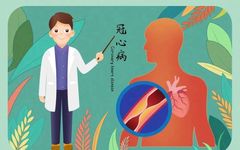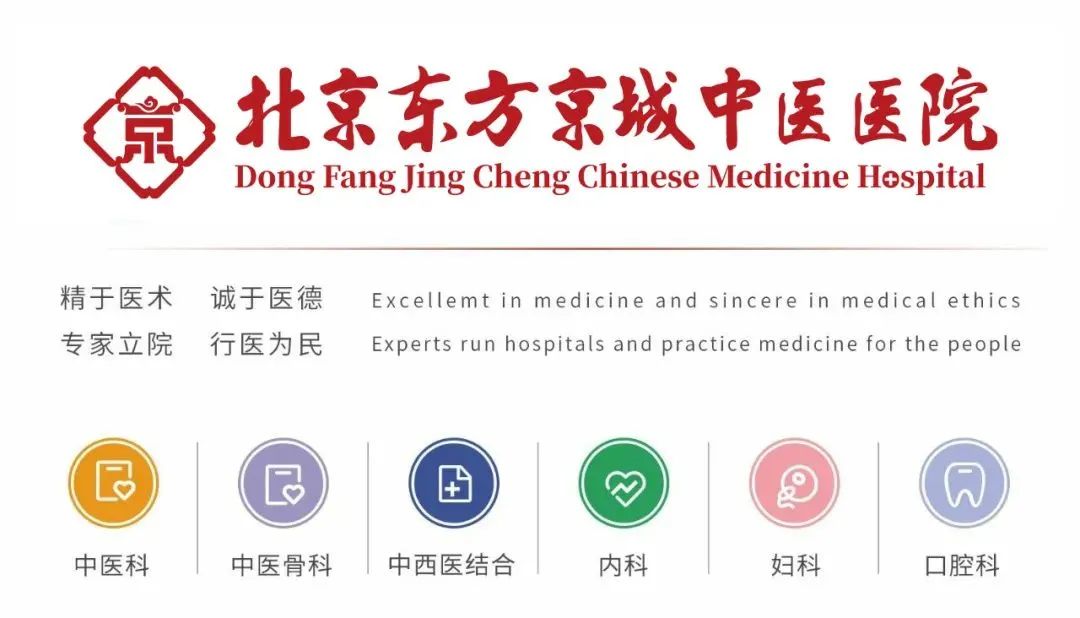
Coronary heart disease can be considered one of the “top killers” of health, with a high incidence and dangerous progression.
Western medicine categorizes coronary heart disease into five types: angina pectoris, arrhythmia, heart failure, myocardial infarction, and cardiac arrest, which correspond to the TCM diagnoses of chest obstruction pain (胸痹心痛), chest obstruction palpitations (胸痹心悸), chest obstruction heart failure (胸痹心衰), chest obstruction syncope (胸痹心厥), and chest obstruction collapse (胸痹心脱).
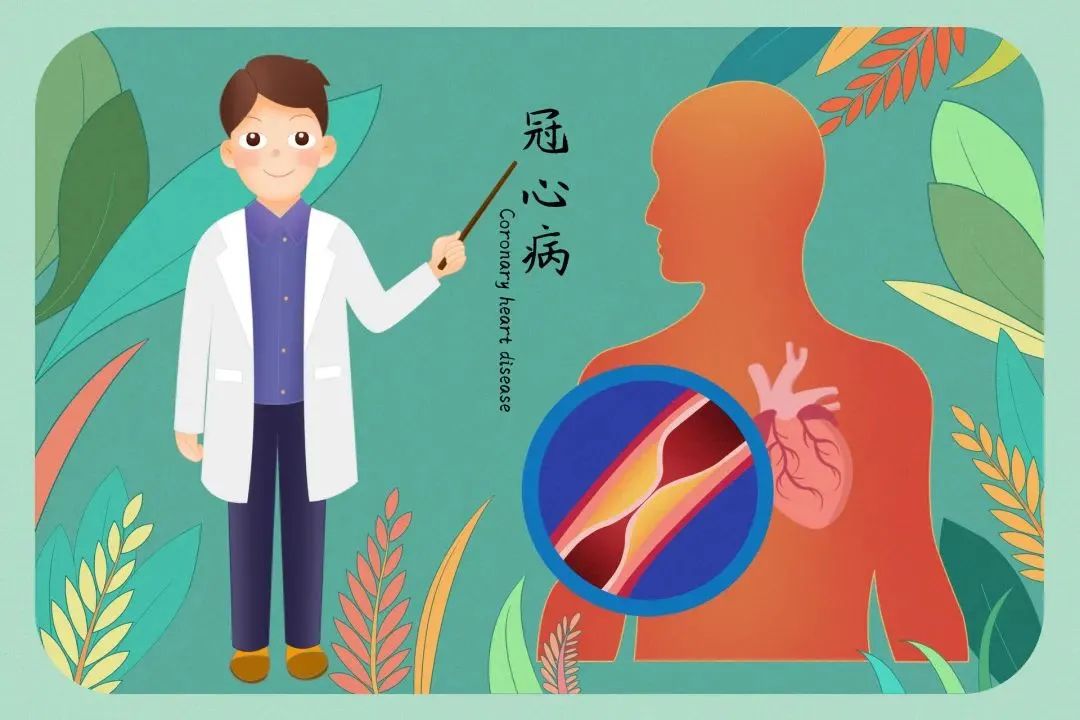
So, how does TCM treat coronary heart disease?

Distinguishing between the root and branch, treatment should focus on both tonifying and unblocking.▲▲▲
For the syndrome differentiation and treatment of coronary heart disease,it is essential to first distinguish between the root (本) and branch (标).
This condition often occurs in middle-aged and elderly individuals, primarily due to organ deficiency, and the imbalance of yin, yang, qi, and blood, with pathological changes often caused by qi stagnation, blood stasis, phlegm turbidity, and cold congealing, leading to obstruction of the vessels:The disease is characterized by a deficiency at the root and excess at the branch.
Identifying the root and branch during diagnosis is crucial; as the saying goes, “Those who understand the root and branch will succeed in all endeavors; those who do not understand the root and branch will act recklessly.”
Supporting the righteous qi and expelling evil is the two main principles in treating this disease.
Generally, treatment of the root should focus on tonification, while treatment of the branch should focus on unblocking.
When patients experience frequent angina attacks, one should “treat the branch urgently,” often using unblocking methods to relieve pain, that is,for qi stagnation, one should regulate it; for blood stasis, one should eliminate it; for phlegm turbidity, one should resolve it; for cold congealing, one should warm it.
When the condition stabilizes, “treat the root gradually,” often using tonifying methods to support the root, that is,for qi deficiency, tonify qi; for yin deficiency, nourish yin; for yang deficiency, warm yang, with a focus on tonifying the spleen and kidney.
For those with recent onset or younger and stronger individuals, unblocking and dispersing methods are preferred; for those with chronic illness or older and weaker individuals, tonifying and harmonizing methods are preferred.
Based on the principles of syndrome differentiation and treatment, one should flexibly apply methods of unblocking first and then tonifying, or tonifying first and then unblocking, or more unblocking and less tonifying, or more tonifying and less unblocking, using both methods in combination to address both the root and branch, carefully selecting herbs.
Ensure warmth without dryness, activity without damage, tonification without stagnation, and nourishment without greasiness.Only then can one eliminate the cause of the disease, harmonize qi and blood, smooth the vessels, and restore organ function, thus relieving pain.
Regulating qi and blood is paramount throughout the treatment.▲▲▲
The human body is inseparable from qi and blood; if qi and blood are unregulated, numerous diseases will arise,thus qi and blood are a major principle in clinical practice.
The Neijing states: “Heart pain occurs when the pulse is obstructed.” Obstruction is the primary cause of angina pectoris.
Due to the deficiency of righteous qi, combined with the six excesses, seven emotions, dietary strain, and fatigue, qi stagnation and blood stasis occur, phlegm turbidity obstructs, and heart yang fails to thrive, leading to obstruction of the heart vessels and resulting in heart pain.
When there is pain, there is obstruction; when there is unblocked, there is no pain; thus, to stop pain, one must first relieve the obstruction, hence the use of methods to invigorate blood and resolve stasis.
However, “invigorating blood does not forget qi,” therefore, it is necessary to combine qi-regulating methods in treatment, that is, “to smooth the qi and blood, allowing them to flow harmoniously, leading to peace.”
01 Methods to Invigorate Blood and Resolve Stasis
Whether the root is deficient or the branch is excess, both can affect the circulation of qi and blood, leading to qi stagnation and blood stasis causing angina pectoris.
Clinically, patients often present with varying degrees of dark purple tongue or stasis points, stasis spots, etc.,indicating that blood stasis is the fundamental pathology of coronary heart disease.
The characteristics of angina pectoris are often squeezing or stabbing pain, localized pain, sudden onset and cessation, often accompanied by symptoms such as chest tightness and shortness of breath, thus treatment should focus on invigorating blood and resolving stasis.
Medication should be selected based on the severity of the condition, usingnourishing blood, invigorating blood, and breaking blood stasis methods.
When the patient’s symptoms are not obvious, with only mild ischemic changes on the electrocardiogram (clinically referred to as “latent coronary heart disease”), the method of nourishing blood and resolving stasis is used, which acts gently and is suitable for those with mild blood stasis.
The formula used is Si Wu Tang (Four Substance Decoction) with modifications; herbs selected include Dan Shen (Salvia miltiorrhiza), Dang Gui (Angelica sinensis), Shao Yao (Paeonia lactiflora), and Ji Xue Teng (Spatholobus suberectus).
If angina pectoris occurs frequently and the electrocardiogram shows significant ischemic changes, the method of invigorating blood and resolving stasis is more potent and suitable for those with severe blood stasis.
The formula used is Xue Fu Zhu Yu Tang (Blood Mansion Decoction) with modifications; herbs selected include Chuan Xiong (Ligusticum chuanxiong), Tao Ren (Peach kernel), Hong Hua (Carthamus tinctorius), and Sheng Pu Huang (Typhae pollen).
As for the method of breaking blood and resolving stasis, due to its strong action, it is most likely to harm qi and blood; clinically, it is only used when there is severe blood stasis (for example, when the above methods for resolving stasis are ineffective, or in cases of coronary heart disease combined with heart failure or cardiogenic liver cirrhosis), and is generally not preferred.
Herbs selected include San Leng (Sparganium), E Zhu (Curcuma), Shui Zhi (Hirudo), and Wu Gong (Scorpion).
02 Qi-Regulating and Blood-Invigorating Methods
“When qi flows, blood flows; when qi stagnates, blood stagnates,” qi stagnation and blood stasis often mutually cause and affect each other, thus treatment should focus on qi-regulating and blood-invigorating, adding qi-regulating herbs to blood-invigorating herbs, integrating qi-regulation into stasis resolution.The formula used is Shou Nian San (Hand Pinch Powder) with modifications.
Since qi-regulating herbs have different selections based on the affected organs, clinical application should be adjusted accordingly.
For those primarily experiencing chest tightness and shortness of breath, select herbs that regulate qi in the chest such as Fo Shou (Buddha’s hand) and Xiang Yuan (Citron);
For those primarily experiencing heart pain, select herbs that regulate qi in the heart such as Tan Xiang (Sandalwood) and Jiang Xiang (Incense);
For those primarily experiencing fullness in the sides, irritability, and sighing, select herbs that regulate liver and gallbladder qi such as Chuan Lian Zi (Toosendan fruit) and Zhi Ke (Bitter orange);
For those primarily experiencing fullness in the abdomen and poor appetite, select herbs that regulate spleen and stomach qi such as Sha Ren (Amomum) and Dou Kou (Cardamom).
When specifically applying blood-invigorating and qi-regulating herbs, it is also important to consider individual differences and emphasize different aspects.
For those with pain as the main symptom, with fixed pain, dark tongue with stasis points or spots, indicating blood stasis as the primary issue, the ratio of herbs should be seven parts blood-invigorating to three parts qi-regulating.
For those with chest tightness and shortness of breath as the main symptoms, with mild pain, indicating qi stagnation as the primary issue, the ratio of herbs should be seven parts qi-regulating to three parts blood-invigorating.
Since qi does not flow, blood does not circulate, when using blood-invigorating herbs, it is essential to add qi-regulating herbs.As long as the application is appropriate, sometimes even a single herb can achieve the goal of simultaneous qi and blood flow.
It is worth noting that due to the warming and drying nature of qi-regulating herbs, they can easily consume qi and injure yin; thus, they should be used sparingly in generally thin and weak individuals; especially for herbs like Hou Po (Magnolia bark) and Zhi Shi (Bitter orange) that break qi, they should only be selected when the patient has symptoms of abdominal fullness, constipation, and thick greasy tongue coating.
03 Qi-Invigorating and Blood-Invigorating Methods
“Qi is the commander of blood, and blood is the mother of qi”; when qi is deficient and unable to move blood, blood stasis forms.
The characteristics of heart pain in this case are often dull and intermittent, with varying intensity, often accompanied by palpitations, shortness of breath, fatigue, sweating, and exacerbation after exertion, with a pale tongue, a fat body with tooth marks, and a pulse that is deep, thin, and weak, thus it is appropriate to invigorate qi and blood, requiring the addition of qi-tonifying herbs to blood-invigorating herbs, integrating tonification into stasis resolution.
The formula used is Bao Yuan Tang (Preserving Original Decoction) with modifications,herbs selected include Huang Qi (Astragalus), Dang Shen (Codonopsis), Yu Zhu (Polygonatum), and Zhi Gan Cao (Honey-fried licorice), aiming to protect qi and blood while allowing blood-invigorating herbs to tonify without stagnation; enhancing the original qi, thus promoting the efficacy of blood-invigorating herbs to dispel stasis and relieve pain without harming the righteous qi.
In the qi-tonifying herbs,Dang Shen has a strong effect and can easily cause fullness and dampness in the diaphragm, so the dosage is generally not more than 10g; if a large amount is necessary for tonification, it can be paired with Sha Ren (Amomum) or Chen Pi (Aged tangerine peel) to help regulate qi and strengthen the spleen, preventing qi stagnation while enhancing the blood-invigorating effect.
Regulating qi and blood is the purpose of treating coronary heart disease and is a consistent theme throughout treatment.Commonly used representative formulas include Dan Shen Yin (Salvia Decoction).
In this formula, Dan Shen enters the heart meridian, invigorating blood and relieving pain, with the saying that it has “the benefits of Dan Shen combined with the four substances.” Tan Xiang (Sandalwood) and Sha Ren (Amomum) regulate qi and relieve pain, also benefiting the stomach qi.
These three herbs work together to harmonize qi and blood, unblocking without harming the righteous qi, making them suitable for any syndrome or method without concerns of contraindications.
Understanding the common and variable, using herbs according to the syndrome▲▲▲
Due to the many causes of qi and blood obstruction, in addition to the above methods of regulating qi and blood, it should be emphasized that due to individual differences in constitution and the variability of disease conditions, when prescribing formulas and herbs, one must understand the common and variable, avoiding rigid application.
Commonly used clinical principles include the following four methods.
01 Dispersing Obstruction and Activating Collaterals
Used for obstruction of the vessels due to heart yang deficiency, phlegm turbidity, and stasis, with symptoms primarily of chest tightness and shortness of breath.The formula used is Gua Lou Xie Bai Ban Xia Tang (Trichosanthes and Allium Sativum Decoction) with added blood-invigorating herbs.
If chest tightness is accompanied by heat or angina, with burning pain, use Xiao Xian Xiong Tang (Minor Chest Sinking Decoction) with added blood-invigorating herbs.
02 Warming and Unblocking Collaterals
Blood congeals when it encounters cold; it flows when warmed, thus this method is suitable for obstruction of the meridians due to cold evil or pain that occurs with cold exposure, with symptoms of pain accompanied by cold limbs, aversion to cold, palpitations, shortness of breath, and a pulse that is deep and slow.Clinically, Gui Zhi Tang (Cinnamon Twig Decoction) with added blood-invigorating herbs is used.
Spleen tonification and stomach benefit methods are used for obstruction due to spleen deficiency, which fails to transform and transport, leading to phlegm turbidity obstructing the blood vessels. Symptoms include chest tightness, abdominal fullness, nausea, and a white greasy or slippery tongue coating, with angina easily triggered after meals.The formula used is Xiang Sha Liu Jun Zi Tang (Aromatic Sand Six Gentlemen Decoction) with added blood-invigorating herbs.
This is a method of treating both the heart and stomach, combining tonification and unblocking.
03 Kidney Tonification and Activating Collaterals
The kidney is the root of the five organs and the foundation of yin and yang, governing the growth, development, and aging of the body.
Clinically, this disease is often seen in individuals over 40 years old, especially post-menopausal women, with incidence increasing with age, indicating a close relationship between this disease and the kidneys.
Thus, coronary heart disease, “its position is in the heart, its root is in the kidney,” tonifying the kidney and supporting the root is also an important principle in treating this disease.
This method can be used during the relief period of angina, for older and weaker individuals, or for those whose pain is not clearly defined, using multiple methods for treatment that do not relieve symptoms.
During treatment, depending on whether there is kidney yin or yang deficiency, blood-invigorating herbs should be added based on tonifying yin or tonifying yang, which often yields better results.
For those with kidney yin deficiency, use Liu Wei Di Huang Tang (Six Flavor Rehmannia Decoction) with modifications, herbs selected include Sheng Di (Rehmannia), Shan Yao (Chinese yam), Gou Qi Zi (Goji berry), Nu Zhen Zi (Ligustrum), and Shan Zhu Yu (Cornus).
For those with kidney yang deficiency, use Jin Gui Shen Qi Wan (Golden Cabinet Kidney Qi Pill) with modifications, herbs selected include Xian Mao (Curculigo), Xian Ling Pi (Epimedium), Rou Cong Rong (Cistanche), Gui Zhi (Cinnamon), and Fu Zi (Aconite).
However, whether nourishing yin or warming yang, it is essential to ensure that yin deficiency is nourished while also considering yang, and that yang deficiency is supplemented while also considering yin, achieving the goal of yin-yang balance.
Seeking Analgesics to Enhance Efficacy▲▲▲
One of the main symptoms of coronary heart disease is angina pectoris, thus seeking effective analgesics in TCM is a priority. Over years of clinical practice, I have gradually identified some herbs with good analgesic effects.
01 Single Herbs
1. Bi Ba (Piper nigrum)
Warming the middle, dispersing cold, and regulating qi to relieve pain, particularly effective for pain triggered by cold. Common dosage is 6g, but due to its spicy nature, prolonged use can easily generate heat; caution is advised for those with excess heat.
2. She Xiang (Musk)
This herb is aromatic and has excellent efficacy in stopping various types of heart pain. Common dosage is 0.15g to 0.3g, encapsulated for oral administration. However, this herb is rare and often counterfeited; Su He Xiang Wan (Borneol Pill) can be used as a substitute.
3. San Qi (Notoginseng)
This herb specifically targets the blood, effectively moving stasis and relieving pain, suitable for all types of heart pain, common dosage is 3g, ground into powder for oral administration.
02 Herbal Combinations
1. Yuan Hu He Bing Pian (Corydalis and Borneol)
Yuan Hu 3g, Bing Pian 1g, ground into powder for oral administration.
Yuan Hu is warm and spicy, regulates qi and relieves pain, invigorates blood and resolves stasis. The ancients said: “When heart pain is unbearable, urgently seek Yuan Hu.” Bing Pian is spicy and slightly cold, opens the orifices and relieves heart and abdominal pain; patients feel a cooling sensation in the heart and spleen after taking it, providing great comfort.
2. Pu Huang He Wu Ling Zhi (Typha and Wulingzhi)
This is a combination of Shi Xiao San (Lost Laugh Powder) (Sheng Pu Huang 12g, Wu Ling Zhi 6-10g), used for persistent pain primarily due to blood stasis.
Li Shizhen stated: “Using Pu Huang and Wu Ling Zhi together can treat all types of heart and abdominal pain.”
3. Fo Shou He Xiang Yuan (Buddha’s Hand and Citron)
Both are qi-regulating and pain-relieving herbs, suitable for heart pain due to qi stagnation. Symptoms include chest tightness, sighing, and belching for relief, common dosage is 10-12g.
4. Ru Xiang He Mo Yao (Frankincense and Myrrh)
Both are resins, known for their aromatic properties that penetrate the heart meridian, serving as blood-invigorating pain-relieving herbs. Common dosage is 6-9g.
5. Wu Gong He Xie Zi (Centipede and Scorpion)
One centipede and 3g of scorpion, ground into powder for oral administration.
This combination is used for difficult-to-treat angina pectoris, showing good efficacy.
6. Tan Xiang He Dan Shen (Sandalwood and Salvia)
Zhang Xichun once used Dan Shen combined with Jiang Xiang to treat heart pain.
In my clinical practice, I have replaced Jiang Xiang with Tan Xiang, which has shown even better analgesic effects,as Tan Xiang adjusts the qi above the diaphragm better than Jiang Xiang.Common dosage for both is 10g, with Dan Shen dosage adjusted according to the condition.
Note:This article is excerpted from Selected Clinical Cases of Li Jieming, compiled by Fan Aiping, published by Xueyuan Press in April 2007. This public account is used for academic exchange; if there is any infringement, please contact for deletion, and please indicate the source when reprinting.
Images are sourced from the internet.
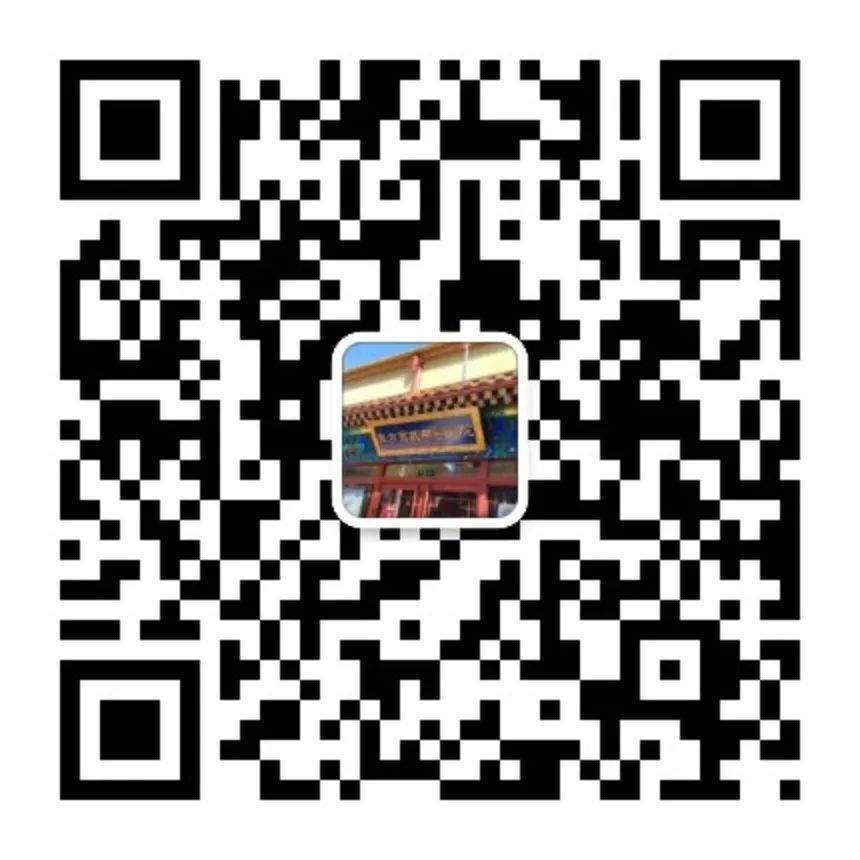
Phone: 13261622715 (same as WeChat)
 PreviousIssuesReviewHistory【World Tuberculosis Day】Life Above All, Everyone Act
PreviousIssuesReviewHistory【World Tuberculosis Day】Life Above All, Everyone Act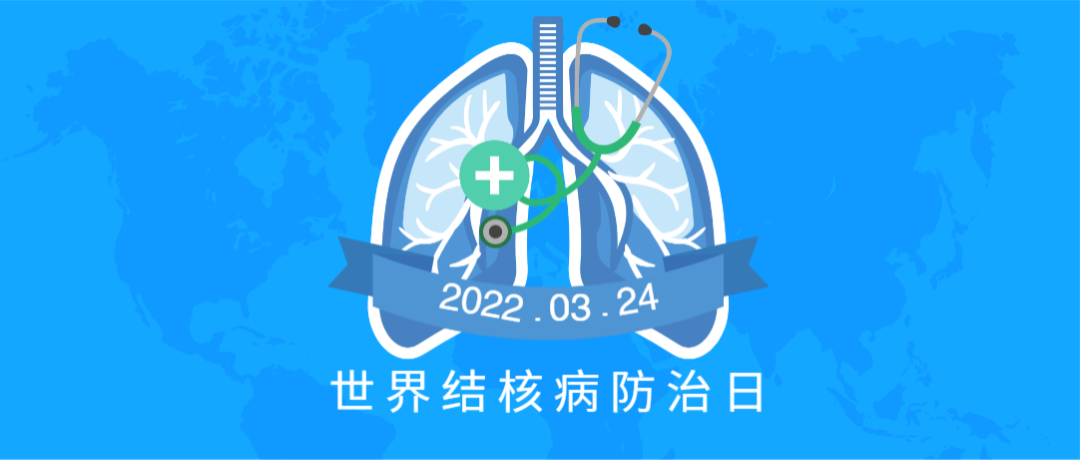 【Popular Science】Unknown TCM Knowledge, Frequent Clapping for Better Health!
【Popular Science】Unknown TCM Knowledge, Frequent Clapping for Better Health!

